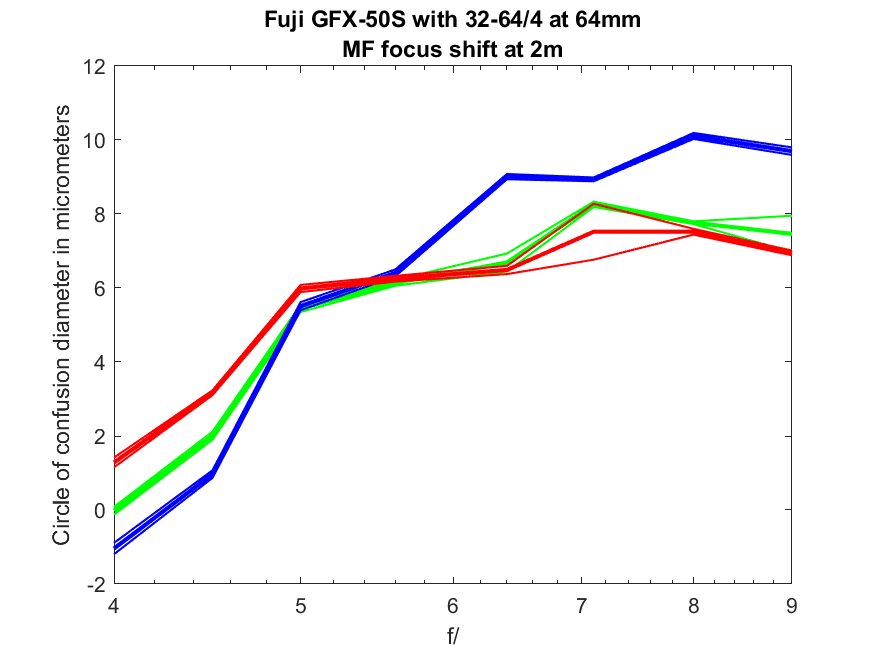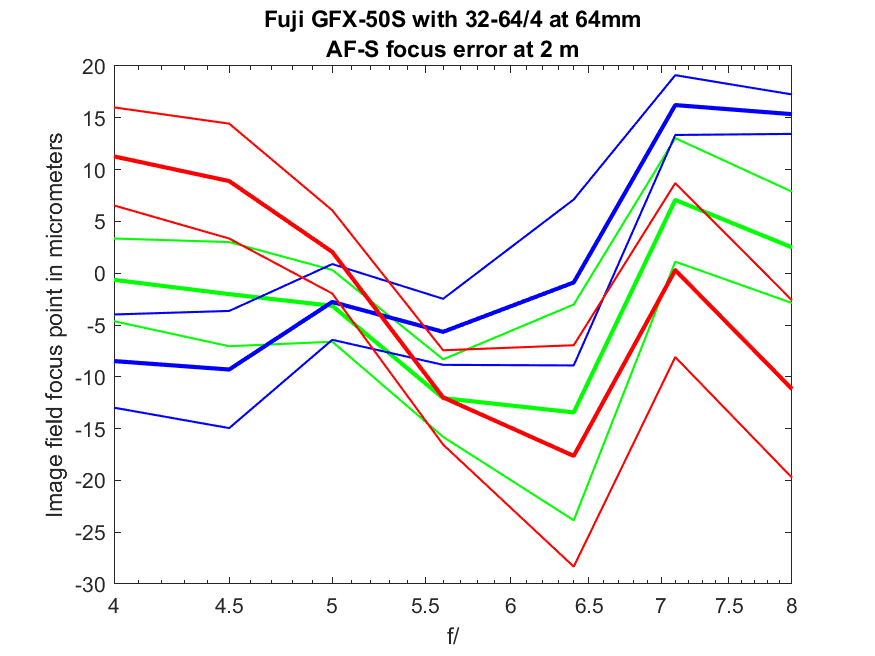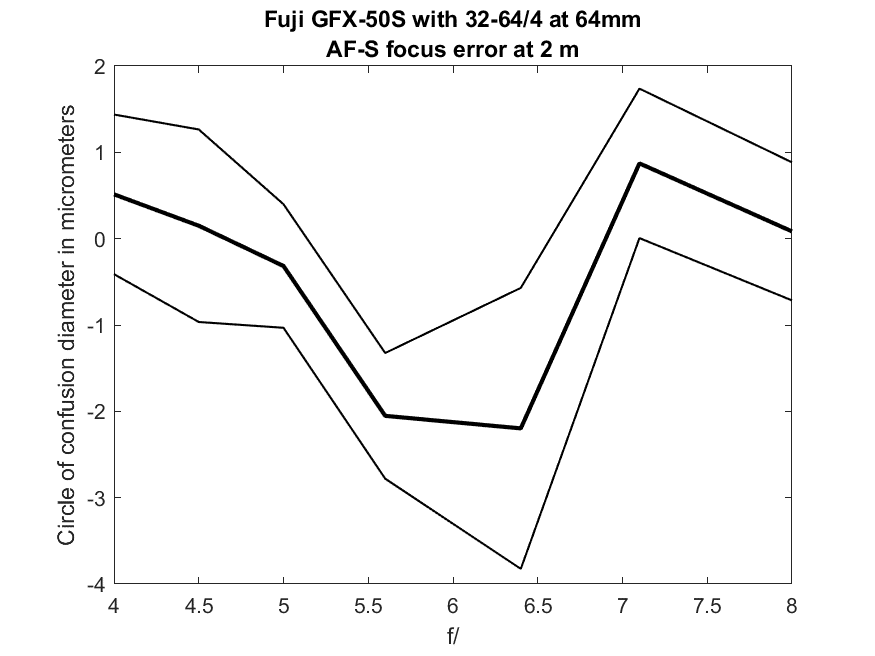This is a continuation of a series of posts on the Fuji GFX 50S. You should be able to find all the posts about that camera in the Category List on the right sidebar, below the Articles widget. There’s a drop-down menu there that you can use to get to all the posts in this series; just look for “GFX 50S”.
A few days ago, I published a study of the focus shift and autofocus errors of the Fuji GFX 50S using the Fuji 45 mm f/2.8 lens. I repeated the test with the 110 mm f/2, and the 63/2.8. Now, I’ll do the last lens in this series, the 32-64 mm f/4. I find it difficult to run these tests on lenses as short as the 23 mm f/4, so I’ll have to skip that one.
At 64 mm:
I’ve plotted the three Adobe RGB color channels. The graph presents displacement of the image projected on the sensor from the desired green-channel focal plane, not the error in the object field in front of the lens. The reason for doing this is to allow easier comparison of lenses of different focal lengths at various target distances. Negative numbers indicate front-focusing. The image-plane shift is in micrometers (um). The separation of the focal distances of the three color planes is because of the longitudinal chromatic aberration (LoCA) of the lens. There were ten exposures at each f-stop. I’ve plotted lines indicating the average (aka mean or mu) of the sample set bolder and added thin lines above and below the means that are one standard deviation (sigma) away from them. The focus shift is away from the camera as you stop down. That means this lens, at this focal length and at this distance, is undercorrected for spherical aberration.
One thing to notice is that the Longitudinal chromatic aberration (LoCA) goes from blue-front-focusing to blue-back-focusing as you stop down, and at f/5 of f/5.6, the lens is apochromatic.
Let’s look at the diameters of the circles of confusion (CoCs) implied by the above focus errors:
If you focus this lens wide open and stop down to between f/5 and f/8, you’ll see a bit over one pixel pitch worth of blur. We’ll get to the optimum focusing strategy in a bit, but first, let me show you the above set of curves for luminance only:
In this case, there’s not much difference between the luminance curves and the green -channel ones.
Here is the focus strategy graph using luminance as the focus metric:
Focusing at f/5.6 and stopping down has a worst-case focus shift blur of less than one pixel pitch. Focusing tat f/8 is probably fine for that stop and anything narrower.
Turning to autofocus, using just AF-S — I’ve curtailed the AF-C curves with this camera since they are so similar to the AF-S ones. The spot size was one larger than the minimum, or two smaller than the default.
These are quite reasonable errors.
Next up: performance at 44 mm.







[…] 63/2.8. Yesterday, I posted the results of testing the last lens in this series, the 32-64 mm f/4. I performed the tests at 64 mm focal length. Earlier today I did the same at 44 mm. Now I’ll finish with the 32 mm […]